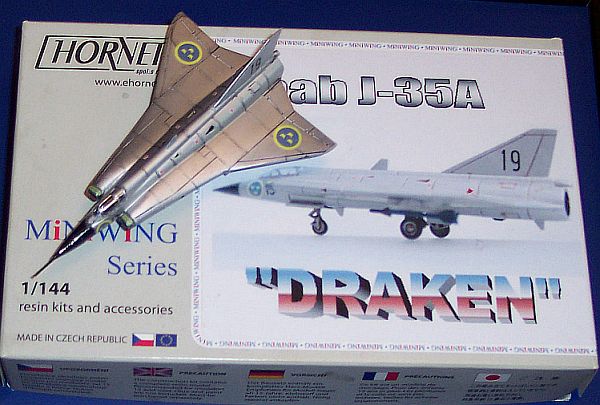
Miniwing 1/144 SAAB J-35A Draken
By Don Joy
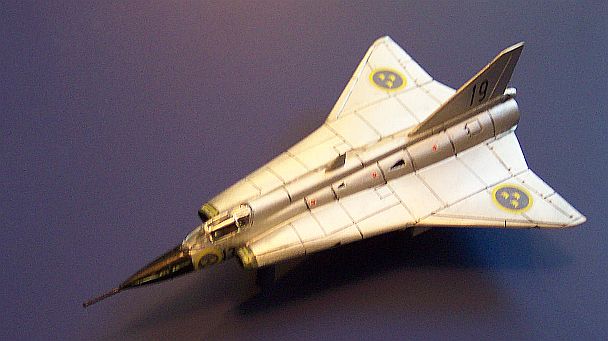 The Saab Draken is an indigenous supersonic jet fighter built in Sweden. The design stated in 1949, the prototype flew in 1955, and it entered squadron service in 1960. The Draken proved a successful design and served air forces in Sweden, Denmark, Finland, and Austria. 644 were eventually built with production ending in 1974. Sweden retired their Drakens in 1999 after 39 years in service. Austria retired the last active duty Drakens in 2005, though several are still flying in civil service in the US and around the world.
The Saab Draken is an indigenous supersonic jet fighter built in Sweden. The design stated in 1949, the prototype flew in 1955, and it entered squadron service in 1960. The Draken proved a successful design and served air forces in Sweden, Denmark, Finland, and Austria. 644 were eventually built with production ending in 1974. Sweden retired their Drakens in 1999 after 39 years in service. Austria retired the last active duty Drakens in 2005, though several are still flying in civil service in the US and around the world.
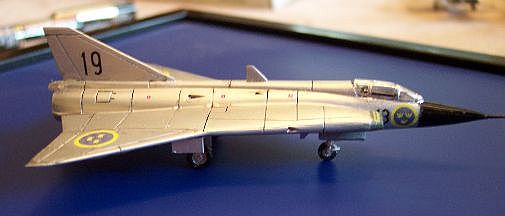 The Miniwings J-35A was reviewed previously and is a clean little kit of the aircraft. Construction is straight forward since there are only 8 airframe pieces and 11 landing gear bits. The only construction problems I had were my own doing: as I explained in my earlier review, the nose and intakes are molded flush and will require care removing them from their “stubs”. I tried to rush thru this and did not do as neat a job as I should have on those parts, so spent some extra time filling around them using Mr. Surfacer 500. The intakes need to be handled with care because the pieces are very small.
The Miniwings J-35A was reviewed previously and is a clean little kit of the aircraft. Construction is straight forward since there are only 8 airframe pieces and 11 landing gear bits. The only construction problems I had were my own doing: as I explained in my earlier review, the nose and intakes are molded flush and will require care removing them from their “stubs”. I tried to rush thru this and did not do as neat a job as I should have on those parts, so spent some extra time filling around them using Mr. Surfacer 500. The intakes need to be handled with care because the pieces are very small.
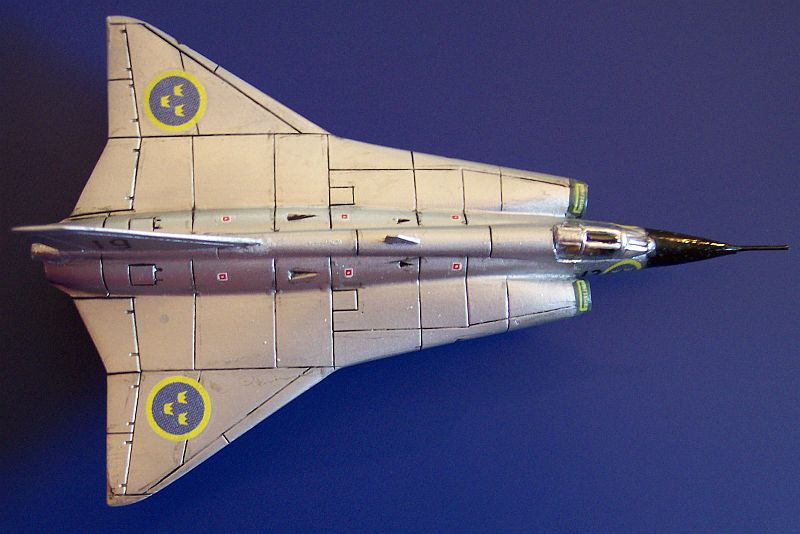 There are 3 small blade antennae, and the instructions are not real clear where those go. A trip to the web and Google provided pictures to assure correct placement for those. I used a short piece of Evergreen for the pitot tube on the nose. There are two Sidewinder rails provided, but since there are no missiles, I left those off.
There are 3 small blade antennae, and the instructions are not real clear where those go. A trip to the web and Google provided pictures to assure correct placement for those. I used a short piece of Evergreen for the pitot tube on the nose. There are two Sidewinder rails provided, but since there are no missiles, I left those off.
I completed construction, then sprayed the entire kit with Mr. Resin Surfacer as an undercoat. I only found one air bubble in the kit. After filling the flaws (see above…), I painted the nose and intakes, masked them, then painted the airframe using Model Master buffing aluminum.
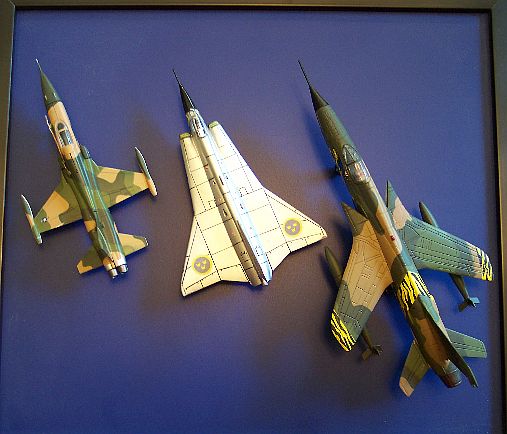 The kit has prominent control surface and panel lines. I tried a technique of using a water based black paint to fill the recessed lines, the wiping the excess off before it completely dried. This darkens the siler a little bit, but “pops” out the recessed lines.
The kit has prominent control surface and panel lines. I tried a technique of using a water based black paint to fill the recessed lines, the wiping the excess off before it completely dried. This darkens the siler a little bit, but “pops” out the recessed lines.
The cockpit was painted black. Seat and Instrument Panel decals are provided, so I used those with Solvaset. The rest of the decals went on easily and react well to Solvaset. Another issue (also my fault) was that I painted the black nose cone too far back and cramped the space I had available for the national insignia and number on either side of the cockpit.
I added the canopy last, using white glue to attach it. The kit does provide two canopies in case you mess up. The frame was hand painted as the canopy is too small for masking.
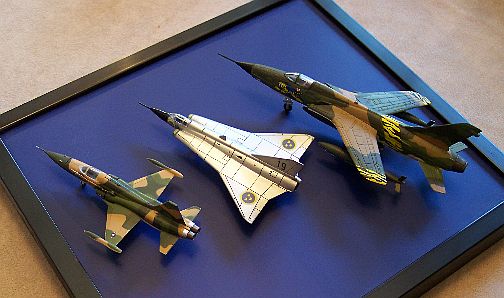 All In all, this was an easy build. Had I spent a bit more care early on, I might have avoided some self-created issues later. I recommend this kit to anyone interested in the subject. I’m including a photo of the Draken next to the J-Wings F-105D and F-5 to provide some size comparison.
All In all, this was an easy build. Had I spent a bit more care early on, I might have avoided some self-created issues later. I recommend this kit to anyone interested in the subject. I’m including a photo of the Draken next to the J-Wings F-105D and F-5 to provide some size comparison.
Things I would change:
-
I used the kit doors because I was reviewing the kit. I would suggest cutting new doors from thin sheet plastic since the kit doors look too thick.
-
The national insignia show a definite “screening” pattern from the printing process. This is accentuated because the blue is printed over the yellow. I would have replaced the kit decals with after market, but could not find any in the stash the right size for a kit his small. The other decals on the sheet did not have this problem, or at least it was not nearly so noticeable.
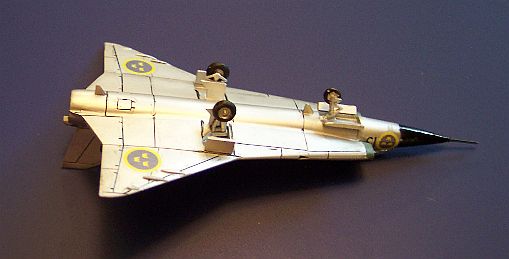 BTW: I see this spelled as both Draken and Draaken. Perhaps a Swedish speaking reader can give me the preferred spelling?
BTW: I see this spelled as both Draken and Draaken. Perhaps a Swedish speaking reader can give me the preferred spelling?
Thanks to Miniwing for the review kit.
